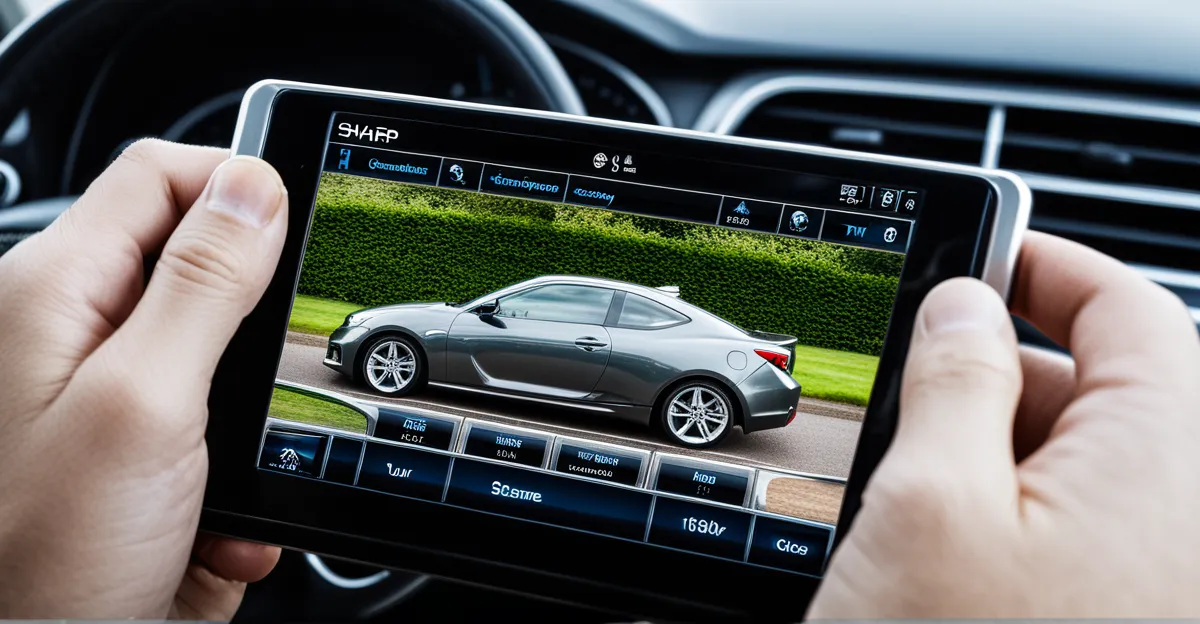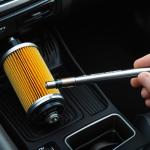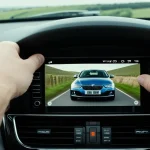How to Prepare for Installing an Aftermarket Car Security System
Preparing for car security installation is crucial to ensure a smooth process and compliance with the UK car security laws. Start by gathering essential tools for car alarm installation, including a wire stripper, screwdriver set, multimeter, electrical tape, and zip ties. Having the right tools minimizes errors and accelerates the setup.
Reviewing UK-specific legal considerations is vital. The installation must not interfere with existing vehicle safety features or breach any modification laws. Some alarm types require notification to your insurer, as it affects coverage. Consult your insurance guidelines early to ensure your security upgrade is recognized and supported.
Also to see : Boosting Brake Longevity: Essential Strategies for High-Performance Sports Cars in the UK
Create a safe and organised workspace in a well-lit, dry environment. Clear any clutter to reduce hazards and keep installation components within reach. For instance, keeping wiring harnesses and the control unit carefully laid out prevents accidental damage or confusion. Proper preparation sets a solid foundation, reducing the risk of mistakes and ensuring your investment in a car security system offers the intended protection and peace of mind.
How to Prepare for Installing an Aftermarket Car Security System
Preparing thoroughly is essential for a smooth car security installation. Start by gathering the necessary tools for car alarm installation, such as wire strippers, screwdrivers, multimeters, and electrical tape. Having all materials ready in advance saves time and reduces errors during the process.
Have you seen this : Ultimate DIY Manual: How to Effortlessly Install an Aftermarket Sunroof in Your UK Vehicle
Understanding UK car security laws before installation is crucial. These laws dictate what modifications are legal and which car alarm types are approved. Checking your insurance guidelines ensures the system won’t invalidate your policy, protecting you from unexpected issues.
Set up a clean, organized workspace with adequate lighting and ventilation. This prevents damage to your vehicle and reduces the risk of accidents. Clear working space allows for easier access to wiring points and mounting locations.
By combining knowledge of preparation for car security installation with compliant tools and legal awareness, you’ll lay the foundation for a successful and hassle-free setup. This preparation positively impacts the system’s performance and your peace of mind.
Step-by-Step Installation Guide for Aftermarket Car Security Systems
Installing an aftermarket car security system begins with identifying connection points in your vehicle, such as the battery, ignition switch, and central locking wires. Accurate knowledge of these points is critical for effective car security installation in the UK. Use your car’s wiring diagram to locate cables safely and avoid accidental damage.
Next, wiring car alarms involves carefully routing the wiring harness from the control unit to sensors and power sources. Maintaining clean, secure connections is vital to prevent short circuits or malfunction. Employ tools for car alarm installation such as wire strippers and electrical tape to ensure neat splices and insulation.
Fitting immobilisers requires positioning the device so it prevents engine start without the proper key or signal while avoiding interference with existing electronics. After installation, basic function testing verifies sensors trigger alarms and immobilisers activate correctly. Confirm that the system responds to your commands and that all wiring remains firmly in place.
Following this car security installation guide UK ensures your system integrates seamlessly, enhancing vehicle protection while complying with installation best practices.
Step-by-Step Installation Guide for Aftermarket Car Security Systems
Preparing for a successful car security installation guide UK involves a clear understanding of your vehicle’s wiring and components. Start by identifying key connection points such as the ignition switch, door triggers, and power sources. Properly locating these spots ensures your wiring car alarms integrates smoothly without interfering with the vehicle’s existing electrical system.
When installing wiring harnesses, control units, and sensors, carefully follow the manufacturer’s instructions. Use the gathered tools for car alarm installation—like wire strippers and multimeters—to maintain clean, secure connections and verify power continuity. Ensuring solid connections helps prevent false alarms or system failures.
After physically mounting components, conduct a basic function test. Activate the alarm system to check sensor responses and immobiliser activation. Testing confirms that the car security installation guide UK has been accurately followed and detects issues early. This step saves time by troubleshooting before finalising the setup.
Thorough preparation combined with meticulous adherence to the installation steps guarantees that your aftermarket security system will protect your car effectively while complying with UK car security laws.
How to Prepare for Installing an Aftermarket Car Security System
Thorough preparation for car security installation is essential to avoid complications. Begin by gathering the necessary tools for car alarm installation: wire strippers, screwdrivers, a multimeter, electrical tape, and zip ties. These tools are fundamental to ensuring clean wiring connections and secure mounting.
Next, understanding UK car security laws helps ensure legal compliance. The laws regulate modifications to vehicle electronics and mandate that alarm systems don’t interfere with safety features like airbags or immobilisers. Improper installation can void insurance coverage, making it vital to consult your insurer about approved alarm types and installation methods.
Setting up a safe, well-lit workspace supports an effective installation. A clear area reduces risks of damaging your car or tools. Organise components and keep wiring harnesses untangled to streamline the process. Prioritising safety prevents mishaps such as electrical shorts or accidental airbag deployment.
Combining an organised workspace with proper tools and adherence to UK car security laws enables a smoother, legal, and efficient installation, offering better protection and peace of mind.
How to Prepare for Installing an Aftermarket Car Security System
Effective preparation for car security installation begins with assembling the right tools for car alarm installation. Essential tools include wire strippers, multimeters, screwdrivers, electrical tape, and zip ties. These enable precise wiring and secure component fitting, reducing errors and enhancing safety.
Understanding UK car security laws is also crucial. These laws govern what modifications are permissible and which alarms are compliant. For example, your installation must not disable mandatory safety features or conflict with vehicle regulations. Non-compliance could lead to insurance issues or legal penalties.
Additionally, check your insurance policy for specific requirements or approvals regarding aftermarket alarms. This step ensures your coverage remains valid after installation, avoiding costly surprises.
Setting up a safe, organised workspace benefits both the installer and the vehicle. Adequate lighting, clean surfaces, and easy access to wiring points foster precision and reduce hazards. Keeping all tools and materials within reach prevents unnecessary interruptions.
By prioritising these steps in preparation for car security installation, you ensure a smoother, compliant process that maximises your new system’s effectiveness and longevity.
How to Prepare for Installing an Aftermarket Car Security System
Effective preparation for car security installation starts with gathering the right tools. Essential tools for car alarm installation include wire strippers for clean cable cuts, a multimeter to verify electrical continuity, screwdrivers of various sizes, electrical tape for insulation, and zip ties to secure wiring harnesses. Using these tools prevents connection faults that can cause system failure.
Next, understanding UK car security laws is fundamental. These laws regulate allowable modifications to avoid interference with safety and emissions equipment. The system must comply with legal standards to ensure your installation is lawful and renewable insurance coverage. Always check with your insurer before installation because some policies demand specific alarm types or professional fitting for validity.
Setting up a safe, organised workspace reduces risk. Choose a well-lit, dry area free of clutter to avoid accidental damage to vehicle wiring or components. Arrange tools systematically and keep wiring harnesses untangled. This organisation supports accuracy during the installation process and helps avoid common mistakes such as cross-wiring or loose connections.
By prioritising correct tools for car alarm installation, adhering to UK car security laws, and preparing a safe workspace, you pave the way for a reliable and compliant car security upgrade.
How to Prepare for Installing an Aftermarket Car Security System
Thorough preparation for car security installation begins with gathering the essential tools for car alarm installation. Key tools include wire strippers, multimeters, screwdrivers, electrical tape, and zip ties. These help achieve clean wiring, secure connections, and neat component mounting, which are critical for a reliable system.
Reviewing UK car security laws is equally crucial. These regulations ensure your installation complies with vehicle modification restrictions and safety requirements. For example, the alarm system must not interfere with airbags or immobilisers. Non-compliance risks invalid insurance coverage and potential legal issues. Confirming your insurance provider’s policy on aftermarket alarms safeguards against unexpected claim denials.
Setting up a safe, well-organised workspace enhances installation efficiency and safety. Use a well-lit, dry area with enough room to access wiring points comfortably. Keep wiring harnesses untangled and tools within easy reach to avoid errors or accidental damage. Prioritising workspace organisation supports adherence to UK car security laws and helps avoid common pitfalls during car security installation.
How to Prepare for Installing an Aftermarket Car Security System
Proper preparation for car security installation begins with gathering essential tools for car alarm installation. These include wire strippers for clean cuts, a reliable multimeter to test voltage and continuity, screwdrivers of various sizes, electrical tape for insulation, and zip ties to secure wiring safely. Having all necessary tools prepared ahead reduces errors and speeds up the process.
Understanding UK car security laws is critical to ensure your installation complies with legal requirements. UK regulations mandate that car alarm systems must not interfere with existing safety features such as airbags or immobilisers. Failure to comply risks voiding insurance coverage and introducing legal issues. It’s important to review your insurance policy carefully, as some insurers require specific alarm types or professional installation for coverage validity.
Setting up a safe, organised workspace supports efficient and secure installation. Choose a dry, well-lit area free of clutter with ample room to lay out wiring harnesses and components. Keeping tools and materials within reach avoids interruptions and accidental damage. This organised environment helps prevent common mistakes like cross-wiring or loose connections, enhancing overall system reliability.
By prioritising these steps—correct tools for car alarm installation, adherence to UK car security laws, and a safe workspace—you ensure a smooth, compliant, and effective car security system upgrade.
How to Prepare for Installing an Aftermarket Car Security System
Effective preparation for car security installation hinges on gathering the correct tools for car alarm installation. Essential tools include wire strippers, screwdrivers, a multimeter, electrical tape, and zip ties. Wire strippers enable precise cable cuts, while the multimeter confirms electrical continuity, reducing errors that could compromise system reliability. Electrical tape and zip ties secure and insulate wiring, preventing shorts and accidental disconnections during use.
Understanding UK car security laws is equally crucial. These laws specify that any aftermarket alarm installation must not interfere with vehicle safety features such as airbags or immobilisers. Failure to comply can lead to legal issues and void insurance coverage. Insurers may require notification of alarm types installed, so reviewing your insurance policy beforehand ensures your coverage remains valid post-installation.
Setting up a safe, well-organised workspace also contributes to installation success. Choose a dry, well-lit area free of clutter to reduce risks of damage or accidental short circuits. Keep wiring harnesses untangled and tools within reach to maintain workflow efficiency while complying with safety regulations. This detailed preparation ensures a smooth process, reducing installation errors and securing your vehicle properly.
How to Prepare for Installing an Aftermarket Car Security System
Effective preparation for car security installation hinges on assembling essential tools for car alarm installation. Key items include wire strippers for clean cuts, a multimeter to measure voltage and continuity, screwdrivers to access mounting points, electrical tape for insulation, and zip ties to secure wiring harnesses. These tools minimise errors like loose connections or shorts that could impair system function.
Understanding UK car security laws is another critical step. These laws ensure modifications do not disable mandatory safety features such as airbags or immobilisers, and that alarms meet regulatory standards. Compliance avoids legal penalties and prevents insurance issues, since insurers often require approved alarms or professional installation to maintain coverage.
Setting up a safe and organised workspace supports both precision and safety. Choose a dry, well-lit area clear of clutter to reduce risks while working around delicate vehicle electronics. Keep all tools for car alarm installation within easy reach and wiring harnesses untangled. This organised environment helps ensure your preparations adhere to UK car security laws while enabling a smooth, effective installation process.










